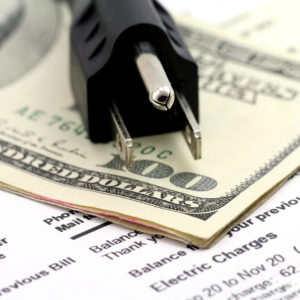For three decades, climate campaigners have fought to make fossil fuels so expensive that people would be forced to abandon them. Their dream is becoming a reality: Energy prices are spiraling out of control and will soon get worse. Yet, we are no closer to solving climate change.
Energy costs increased 26 percent across industrialized economies last year and will rise globally by an additional 50 percent this year. While Western governments are blaming Russia’s war on Ukraine, prices were already rising because of climate policies that choke fossil fuel investment. Since the 2015 Paris climate agreement was inked, the world’s 1,200 biggest energy corporations have slashed capital investment in oil and gas by more than two-thirds. Huge price rises are the inevitable result of forcing more energy out of an increasingly starved system.
The climate policy approach of pushing consumers and businesses away from fossil fuels with price spikes is causing pain with little climate pay-off for two reasons.
First, solar and wind can meet only a fraction of global electricity needs. Even with massive subsidies and political support, solar and wind delivered just 9 percent of global electricity in 2020. Heating, transport and vital industrial processes account for much more energy use than electricity. This means solar and wind deliver just 1.8 percent of the global energy supply. And electricity is the easiest of these components to decarbonize: we haven’t made meaningful progress in greening the remaining four-fifths of global energy.
Second, even in the rich world it is clear that few people are willing to pay the phenomenal price of achieving net-zero carbon emissions. Soaring prices are hiking energy poverty in industrialized economies, and prices climb even further. Germany is on track to spend more than half a trillion dollars on climate policies by 2025, yet has managed to reduce fossil fuel dependency only from 84 percent in 2000 to 77 percent today. McKinsey & Co., a global management consulting firm, estimates that getting to zero carbon will cost Europe 5.3 percent of its GDP in low-emission assets every year, or for Germany more than $200 billion annually. That is more than Germany spends annually on education and police, courts and prisons combined.
Policymakers in Western countries can’t continue to push expensive policies without a backlash. As energy prices soar, risks grow of resentment and strife, as France saw with the “yellow vest” protest movement.
Rising energy prices are even more serious for the poorest billions because they block the pathway out of poverty and make fertilizer unaffordable for farmers, imperiling food production. The well-off in rich countries might be able to withstand the pain of some climate policies, but emerging economies like India or low-income countries in Africa cannot afford to sacrifice poverty eradication and economic development to tackle climate change.
Globally, the inability of green energy to compete means the world is on track to remain dependent on fossil fuels. Analyzing all current and promised climate policies, the International Energy Agency finds fossil fuels will still provide two-thirds of global energy use by 2050, only a modest drop from 79 percent today.
And green energy’s failings are why carbon emissions are still increasing. Last year saw the highest global emissions ever. This year is likely to be higher again. Climate policy is broken. By forcing up the price of fossil fuels, policymakers have put the cart in front of the horse. Instead, we need to make green energy much cheaper and more effective.
Humanity has relied on innovation to fix other big challenges. We didn’t solve air pollution by forcing everyone to stop driving but by inventing the catalytic converter that drastically lowers pollution. We didn’t slash hunger by telling everyone to eat less but through the Green Revolution that enabled farmers to produce much more food.
Yet, innovation in green energy has been neglected for three decades. In 1980, the rich world spent more than 8 cents of every $100 of GDP on low-carbon technologies. As climate policies focused on making fossil fuels more expensive, green research spending halved to less than 4 cents on every $100.
Researchers for Copenhagen Consensus, including three Nobel laureate economists, have shown the most effective climate policy possible is to increase green R&D spending fivefold to $100 billion per year. This would still be much less than the $755 billion the world spent just last year on often ineffective, current green technology.
We don’t know where the breakthroughs will happen. They could come in nuclear energy, which can provide reliable power around-the-clock unlike the intermittency of solar or wind, but remains much more expensive than fossil fuels. With more R&D, “fourth generation” nuclear could provide much cheaper, safer power. But we need to look for breakthroughs across all areas of energy technology, from cheaper solar and wind with massive and very cheap storage to carbon-dioxide extraction, fusion, second-generation biofuels and many other potential solutions.
Climate change will not be solved by making fossil energy unaffordable but by innovating down the price of green technologies so everyone will be able to switch.

